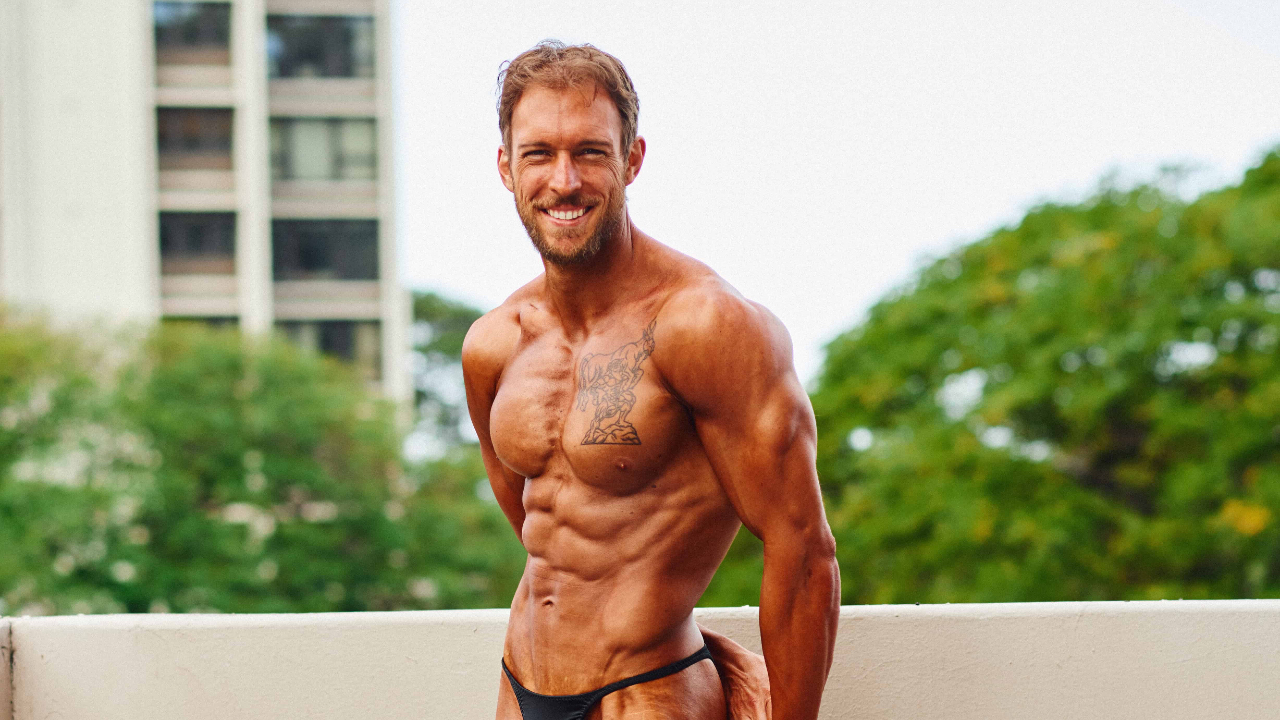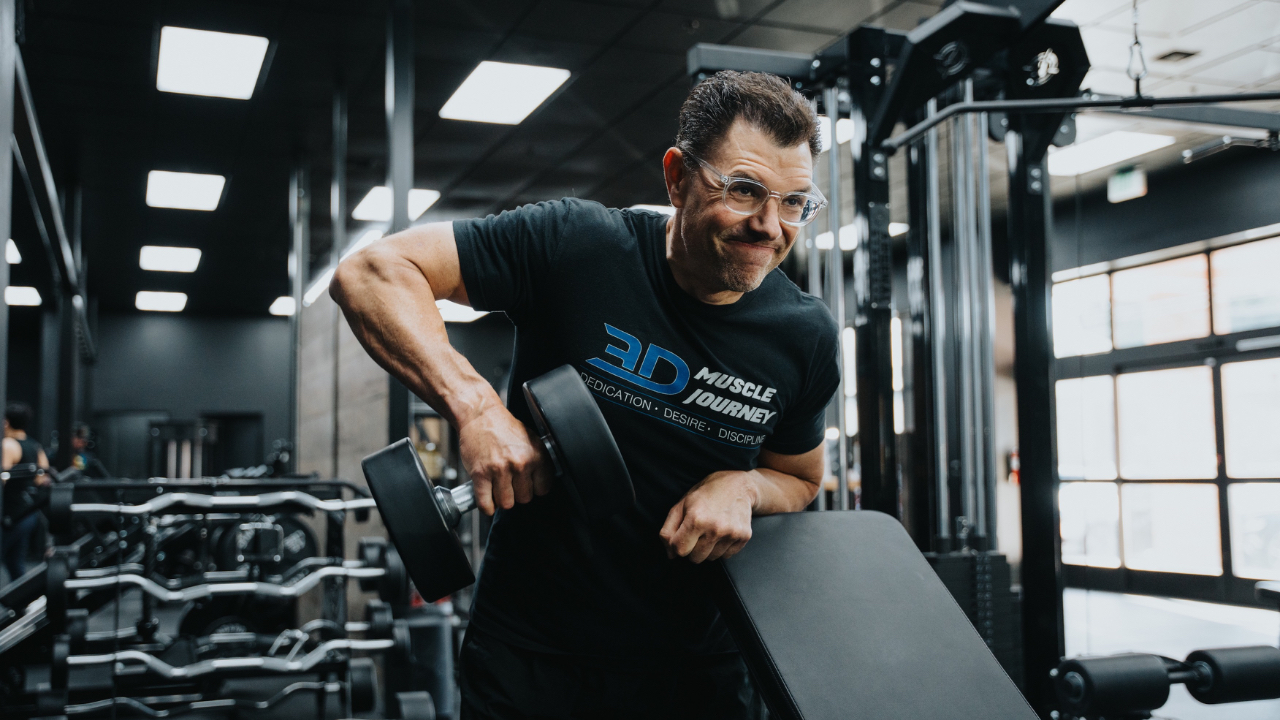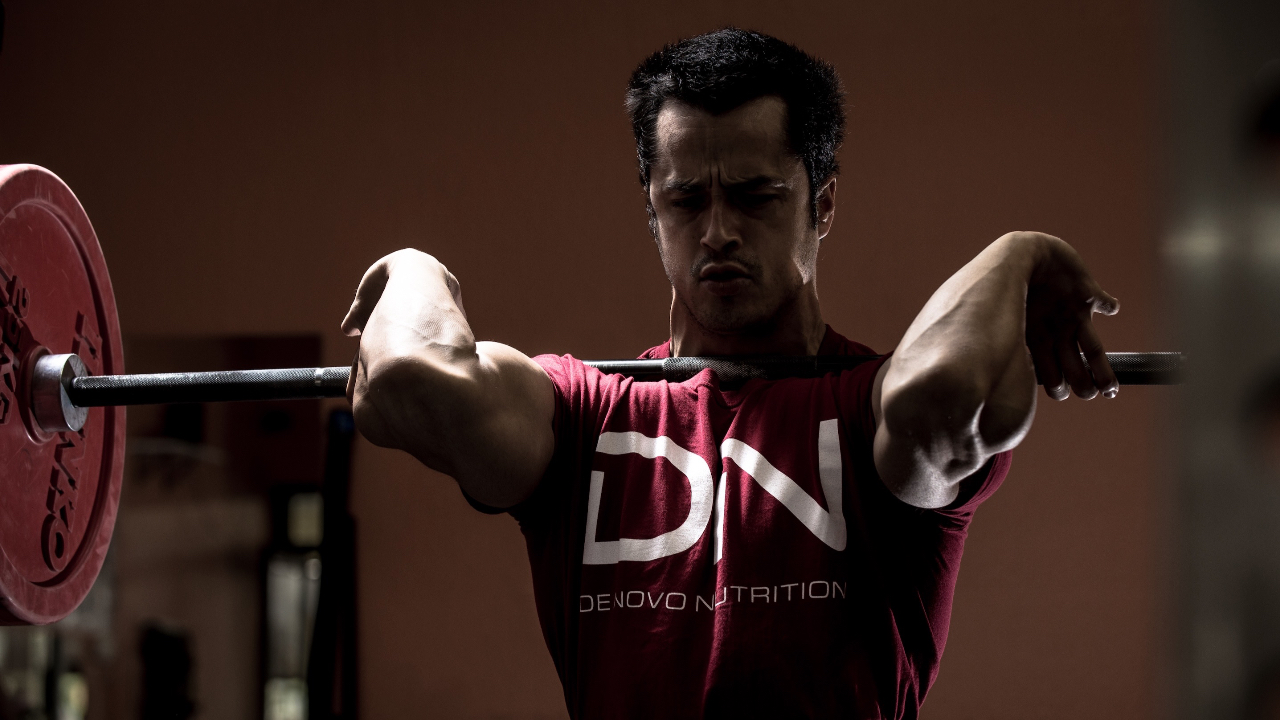BY: ERIC HELMS
Most in the bodybuilding community are motivated by a desire to look a certain way, or at the very least to improve upon their physique and take more control of their appearance. Understandably, this often necessitates dietary manipulation. More often than not, individuals go through phases of caloric restriction to reduce fat mass (while attempting to retain muscle mass), alternated with phases of caloric surplus to increase muscle mass (while attempting to minimize fat gain). Competitive bodybuilders and physique athletes do this in an effort to be competitive season to season, and it is a necessary approach to make progress between seasons, and to step on stage extremely lean.
Unfortunately, this back and forth can often interfere with having a healthy, normal relationship with food. It is rare that bodybuilders, especially novices, are comfortable and capable of managing their body composition without being at either end of the spectrum. Maintenance is often seen as antithetical to the goal of bodybuilding; which is to always progress, in one way or another. Thus, the idea of not being in an assertive deficit or surplus is unfamiliar at best, or seen as a waste of time at worst.
However, we need to consider the implications beyond fat loss and muscle gain associated with bouncing between the ends of these two spectrums. For most people who aren’t competitors, they want to be proud of their physique and want to like what they see in the mirror 24/7, 365, not just for the last month of their cut and the few weeks after it. Thus, there is value in learning to “maintain”, or as we at 3DMJ like to call it, “gaintain”.
Even for competitors, there is value in learning this skill. Let’s face it, for drug free competitors with even a few years of hard, consistent, structured training under their belts, muscle gain is a slow process, and trying to speed it up by eating in a large surplus will only increase rates of fat gain, without increasing rates of muscle gain [1]. Thus, for an advanced lifter, a surplus should be subtle and not too distinguishable from maintenance anyway.
The problem is, that we don’t have well defined tools for “gaintaining”. We are brought up in the culture of “bulk or cut”, and we don’t have the skills or mind-set needed to have a more normal relationship with food. I can’t tell you how many people come to me after their 3rd, 4th or even 5th failed attempt at trying to cut down and maintain a leaner physique (typically 8-10% for men, and 16-18% for women). Don’t get me wrong, they frequently achieve this level of leanness, but rarely can they maintain it and it almost never becomes their “walk around” physique.
So, what’s the issue? Well, as best I can tell it’s 2-fold. First, as you might expect based on the introduction, it comes down to lacking the skillset necessary to “gaintain”. If you are reading this article, you are probably familiar with the concept of preparing your own foods vs eating out during a cut, weighing and measuring your food, aiming to hit certain macronutrient targets on a day to day basis and tracking weight loss and adjusting your calories until the desired fat loss is achieved.
Now let’s be honest, this is not a sustainable long-term approach to nutrition. No one expects you to abstain from eating out, weigh all your meals, track your bodyweight and hit target macros forever, even if your macro targets are higher than they were during your cut. Certainly, doing all this is reasonable when you are pushing for a specific, time restricted goal, but as a lifestyle…I think not.
So, what skills must be learned to maintain fat loss after a diet? In short, you need to maintain the bare minimum behaviors to prevent fat gain after the diet is over. Is tracking all three macronutrients within ~10g needed when dieting to single digit body fat for men or the mid-teens for women? It certainly can help. Low body fat and low food levels make training performance less consistent and they also make life performance less consistent. Producing a deficit while balancing which macronutrients are reduced is important when you’re “threading the needle”, but it becomes substantially less important when you have more calories to play with. Thus, the first step I recommend is to just set a protein minimum and a calorie range (+or-100kcals) when the diet ends and you return to maintenance calories. Since you have plenty of fat and carbohydrate to work with, the distribution matters much less. This is an easier ask and it’s a great first step towards adopting more sustainable behaviors around food. However, even this is often not sustainable in the long run.
Most likely, after repeated cuts, you have probably substantially changed your habits and perspectives around food. You now see foods not just as individual entities, but also as their constituent nutrients. You can estimate calories and macronutrients and gauge portions reliably compared to before you embarked on your bodybuilding journey. You also probably seek out high protein foods and healthier options when possible, and overall know which foods you can fit into your nutrition targets. This begs the question; do you need to track your nutrition at all when you aren’t cutting? Remember, the whole point of tracking was to ensure you were creating a deficit, but you also tracked your bodyweight to gauge whether or not a deficit was indeed created and that it was large enough. Now that you don’t have as restrictive of a goal, I would advise working towards tracking bodyweight alone.
Essentially bodyweight can become a surrogate for energy balance. If your 7 to 14-day average bodyweight is going up over time too quickly, you know you need to cut back a bit. Likewise, if you are losing weight, you know you can eat more. This is a great time to start emphasizing your actual hunger and satiety signals that you have may trained yourself to ignore after years of “eating by the numbers”. Intentionally being a bit fuller or a bit less full after meals when bodyweight increases too quickly, or doesn’t increase quickly enough (depending on your goals, respectively), is a great way to start reincorporating your body’s signals with bodyweight tracking data. This is ideally where I like to get my competitors to in their offseasons: tracking as little as possible while still being on point with all of the items on the nutritional checklist, but this takes time and multiple offseasons to really be able to do.
Intuitive eating is a buzzword at the moment in the fitness community, and largely misunderstood as people think that this means just eating freely, but the reality is most obese people are “eating intuitively” if we use the (incorrect) definition of just eating what you want (while I won’t go into it here, intuitive eating is actually a term for mindful, unrestricted eating based on awareness of your hunger and satiety signals not for the purpose of weight loss or body composition change, but I digress). “Intuitive eating” the way lean people often present it, is a misnomer. In reality, what they mean is: dietary restraint that has become so habituated that they don’t have to think about it anymore. Make no mistake, this can take years of nutritional awareness and attempts at lifestyle change to accomplish. It’s nice when you get there, and I’ve presented some tools to use to help you get there, but it won’t happen overnight.
Now let’s get to the tough stuff. Remember how I said this was a 2-fold issue? I tackled the easy part that you wanted to hear first. I told you what you can do to maintain a physique more in line with how you’d like to look. I broke down some practical approaches to maintaining a leaner physique after a cut, while tracking a minimal number of variables to make it more sustainable.
Now let’s talk about the elephant in the room. You might just be trying to maintain a leaner physique than is realistic or healthy.
As I said before, I can’t tell you how many times I’ve consulted with people who are frustrated because this was their 5th attempt at maintaining a leaner physique. Many times, the solution is not a new behavior, strategy, dietary approach, eating schedule, macronutrient breakdown, refeed schedule, or satiating food tactic (drink water, and eat a fibrous salad before your main meal and make sure to chew your food slowly!). Rather, the solution is accepting the fact that perhaps even with new habits well established, you may have to accept that maintaining 8% if you are a guy or 15% body fat if you are a gal (or whatever number you just can’t seem to hold into) isn’t in the cards for you as a “walk around physique”.
It’s cliché, but there is truth in the saying that the definition of insanity is “doing the same thing over and over again and expecting different results.” Acceptance is the elephant in the room. From a health and fitness perspective there is absolutely nothing wrong with walking around at 15% bodyfat for a guy or 24% bodyfat for a gal, or even a fair bit higher. If you have a healthy body fat level, and you are training hard and making progress you are doing it right. If you are constantly struggling mentally and physically to achieve a low level of body fat that has proven time and time again to not be maintainable, that is unhealthy, mentally and physically.
If you find yourself relating to what I’m typing at this point, I want you to ask yourself some hard questions. Why do you want to get this lean and maintain it? Do you really think that will solve something in your life, make life better, or make you happy? I can tell you having been a bodybuilding coach for a decade now, that having abs has never been the solution for anyone. I’ve never seen someone’s life change from going from lean, to really lean. Sure, the struggle of dieting down and pushing yourself beyond what you thought you were capable of can be empowering and certainly competitive bodybuilding has been a positive experience for me for that reason. But, let’s be honest, you need a deeper goal than maintaining a 6-pack if you want to live a fulfilled life.
REFERENCES
- Garthe, I., T. Raastad, and J. Sundgot-Borgen, Long-term effect of nutritional counselling on desired gain in body mass and lean body mass in elite athletes. Applied physiology, nutrition, and metabolism = Physiologie appliquee, nutrition et metabolisme, 2011. 36(4): p. 547-54.







